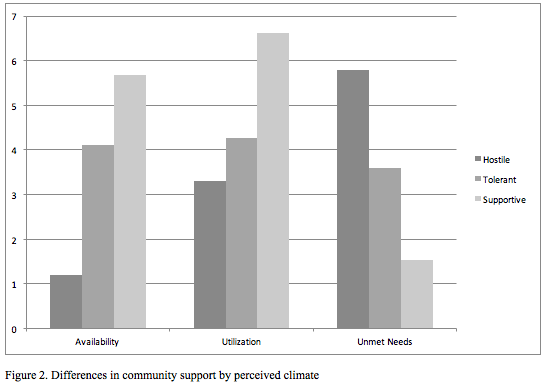Study gauges perceptions of transgender youths in small towns

LAWRENCE — Transgender youths face a number of challenges each day, and it’s easy to assume those who live in small, rural towns have less understanding and more hostility in their lives. But a new study shows that’s not necessarily the case and that how transgender youths perceive the climate in their community is more significant than the number of residents.
Megan Paceley, assistant professor of social welfare at the University of Kansas, has published a study in which she surveyed 70 and interviewed seven transgender youths who live in small towns in a Midwestern state. The article, published in the Journal of Youth Studies by Paceley; Sarah Okrey-Anderson, doctoral student at the University of Minnesota, and Micah Heumann, academic adviser at the University of Connecticut, aimed to find out how transgender youths view their communities, to help build a knowledge base of how social workers, educators and community members can better support them and meet their needs.
“I wanted to better understand how they perceived their communities,” Paceley said. “How community size, community climate, support and resources available and the role their communities played in their lives.”
For the study, community was conceptualized as “factors in the environment that lead to general and minority-specific stress” and “ways in which the community can act as a support and mitigate the negative mental health outcomes associated with stigma and stress,” Paceley said. The youths were asked about those factors and what they meant to them individually.
While the findings showed that smaller towns were more likely to be deemed unsupportive by the transgender youths living there, it wasn’t the case for all respondents. Most said their communities were at least somewhat tolerant, meaning they had both support and experiences with people who were not understanding, but also not openly hostile to them.
“Rural communities are not inherently negative. There are positives that you get in small towns that you don’t get in bigger places. A lot of youths really liked their small towns,” Paceley said. “This showed that community size is not necessarily as important as community climate. I think that was interesting to find.”
The youths were asked about the resources and support they had access to. Many said that community centers, public libraries, HIV/AIDS support organizations and even affirming churches were all places in their community where they felt comfortable and welcomed. Others reported their schools had gay straight alliances where they were welcomed, but they pointed out the groups often were focused more on issues of importance to the gay, lesbian and bisexual communities, but not the transgender community, or that they were the only transgender individual at the group. Other youths reported they didn’t have such resources available in their small town, but they could access them in a nearby community within driving distance. Some knew there were such resources nearby, but could not access them due to lack of transportation or supportive parents.
Regardless of available resources, support or community size, the respondents uniformly said visibility of transgender issues and more support was needed.
“Across the board, every transgender youth said, ‘We need more support in our towns.’ Things like legal advice and assistance, resources and things like that,” Paceley said.
That assertion was supported by the finding that there were no significant differences in the mean number of available, utilized or unmet needs for support by community size and that the mean number of utilized resources was significantly lower in communities deemed hostile than those perceived as tolerant.
Paceley has previously authored research exploring the needs of LGBTQ youth in rural areas. Following the recent research, she plans to study the messages that transgender youths hear and how they are internalized or rejected. She also hopes to better understand the role shame plays in their lives. For example, when they hear news that President Donald Trump has tweeted that transgender individuals will not be allowed to serve in the military or that transgender individuals have a mental illness, do they feel that they do indeed have a problem or are not good enough, or do they reject that thinking?
Taken together, the information can help social workers, counselors, educators, school administrators, parents, community members and anyone who associates with youth better understand and provide supports for transgender youths and think of new ways to provide resources to help them lead safe, healthy lives.
Image source: Megan Paceley, assistant professor of social welfare at the University of Kansas.